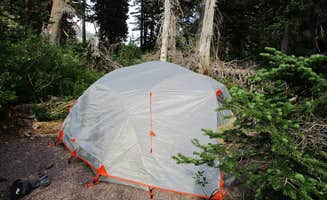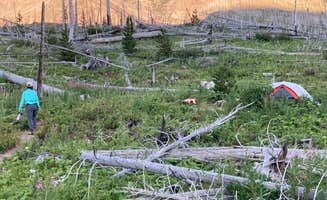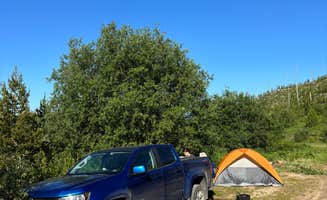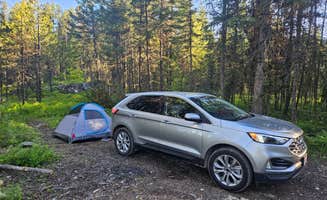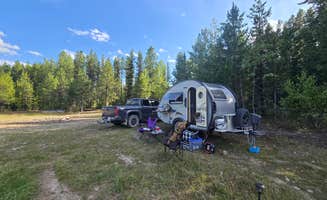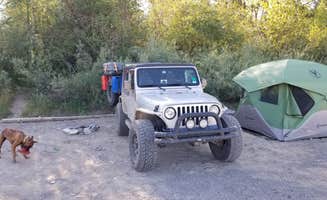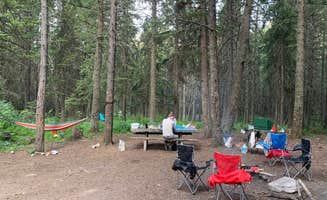Primitive tent campsites near Browning, Montana provide direct access to some of Glacier National Park's less-traveled sections. This eastern region sits at elevations between 4,500-5,200 feet, creating cooler summer temperatures compared to the western portions of the park. Seasonal road conditions often limit access to many dispersed campsites until late June or early July when snowmelt permits vehicle passage.
What to do
Explore mountain lakes: Access alpine waters via backcountry trails from Cut Bank Campground. "The Cut Bank Creek drainage is also a fantastic place to embark on some great hiking and it provides some of the best of Montana's Rocky Mountain Front scenery and wildlife viewing," notes Seth T. about Cut Bank Campground.
Fish for trout: Small mountain streams throughout the area contain native trout populations. A camper at Skyland Rd Dispersed Camping mentioned, "This is side of road parking on National forest dirt road. Lots of pull offs every 1/4 mile or so. I took one right by creek. Creek full of small trout."
Wildlife observation: Morning and evening hours provide optimal wildlife viewing opportunities. "Grizzly bears are dense in this drainage and seeing a track on the trail in the morning gives you that feeling of true wildness we all yearn for," reports one Cut Bank Campground visitor.
What campers like
Solitude during weekdays: Mid-week arrivals significantly increase your chances of securing prime camping spots. "We stayed at the first site when coming off of the road. Very pretty view and a fire ring. Lots of room to park and set up at that particular site," shares Theresa C. about Skyland Road.
River access: Many dispersed sites offer direct water access for cooling off during summer months. A visitor to Blankenship Bridge shared, "Right on a clear river, came in on Tuesday at 6pm. Still river spots available. Dog friendly and safe, I'm a female traveling on my own with my dog."
Dark night skies: The remote location of tent campsites near Browning provides exceptional stargazing opportunities with minimal light pollution. "Campsite is conveniently located just Northeast of the lake, about 7 miles away from the closest road. The hike in and out from the lake is surrounded by beautiful views," explains Wyatt R. about Gunsight Lake Wilderness Campsite.
What you should know
Road conditions: Many dispersed sites require high-clearance vehicles due to unmaintained access roads. "Deep rutted muddy holes filled with water to get to site. Sketchy low trees and narrow road. Decided not to risk it in my van," warns David R. about Blankenship Bridge access.
Availability patterns: Sites fill quickly during peak season (July-August), especially on weekends. Arrive before 2pm to increase your chances of finding an open spot. "The spots were a tad small depending on your rig, just big enough for a pickup truck and tent. Really quiet and peaceful, felt like you had the whole place to yourself," explains Brianna V. about Skyland Road camping.
Permit requirements: All backcountry camping in Glacier National Park requires advance permits, available at ranger stations. "Gunsight Lake is simply beautiful. It's a decent trek out to the lake, beginning with a quick descent, but it mellows out in the valley as you hike back in," notes Anthony E. about Ryan Road Dispersed Camping.
Tips for camping with families
Consider established campgrounds: For camping with children, Cut Bank offers more predictable conditions. "This is a dirt entrance to Glacier National Park. The campground is small (14 sites) and only provide a vault toilet. Here is the Glacier that is a little bit wild, a little bit remote and everything I ever wanted from the Park," shares Lindsay B.
Look for flat campsites: When choosing dispersed sites with children, prioritize level ground away from steep drop-offs. "Driving along the skyland road's ridge was amazing, gorgeous mountain views. Spots are few but very spaced out for privacy," reports Brianna V.
Pack water filtration: No reliable potable water exists at most dispersed sites near Browning. Filter water from streams for drinking and cooking. "Fresh running water in the creek to filter water for all your water needs," advises Jeff B. about Cut Bank.
Tips from RVers
Scout first: Drive the entire access road before attempting to bring in larger rigs. "We have a 42' trailer and thought we would give this spot a shot. There's a slightly rough dirt road to get to the camp spots. There were about 3-4 sites that could fit our RV," explains kristen about Morning Star Lake Wilderness Campsite.
Identify turnaround points: Some forest service roads lack adequate turning space for longer vehicles. "Biggest obstacle is finding a place to turnaround. There's a place just before mile marker 3. There also has to be a place further up the road because horse trailers longer than my trailer are coming down the road," notes Ralph M.
Bring leveling blocks: Most dispersed sites near Browning have uneven terrain requiring additional leveling equipment. "The road in was narrow. Glad I didn't have any problems with on coming riggs," shares edward about Ryan Road camping.



